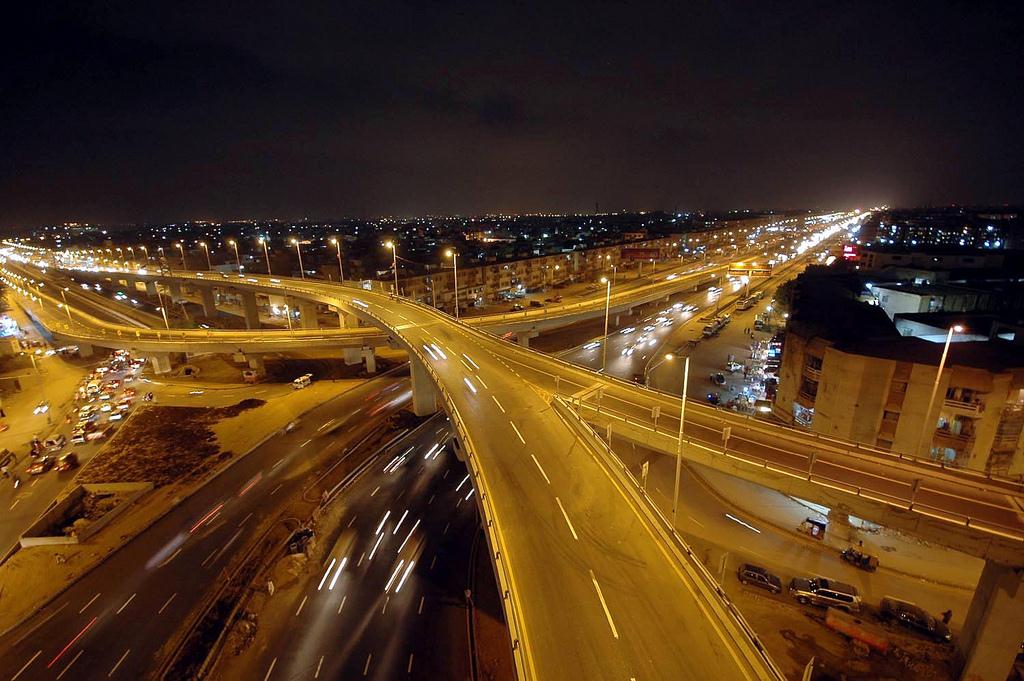Two of India’s neighbours are taking different approaches to dealing with India’s economic rise, although both are signalling a willingness, of kinds, to work together.
Pakistan is aligning itself with China, a sometime and perhaps ongoing opponent of India, via a series of infrastructure developments known as the China-Pakistan Economic Corridor (CPEC). Bangladesh, meanwhile, seems willing to work with everybody.

Karachi’s new container terminal operator, South Asia Pakistan Terminals (SAPT), built by Hong Kong’s Hutchison Port Holdings, is a game-changer for Pakistan, particularly when paired with other developments planned as part of the CPEC, a senior shipping official has said.
SAPT, which is near completion, will not only bring a huge amount of new capacity to Pakistan, but will also allow it to enter the transhipment market – a notable change, Abdullah Farrukh, chairman of the All Pakistan Shipping Federation, told Asia Cargo News.
SAPT will not only give Karachi a new container terminal – the city currently has four, including one at Port Qasim – but also the ability to move a further 3.2 million TEUs.
The four-berth terminal, to be kitted out with modern facilities including up to 52 rubber-tyred gantry cranes and 1,000 reefers, will start with a draft of 16 metres.
“[Throughput] could be double or triple in 10 years,” said Farrukh, who went on to say the significance lies not in numbers but in what they will allow Pakistan, and others, to do and become.
Not only will the new terminal allow Pakistan to be a bridgehead for those wanting to export into Central Asia and China’s western provinces, but the infrastructure China is putting in under the CPEC such as road and rails also gives those countries warm water access, a significant first.
It will also cut costs and times for goods moving from places like Kashgar, China’s westernmost city, located near the border with Kyrgyzstan, Tajikistan, Afghanistan, and Pakistan, by as much as 50% if Europe-bound and 36% if they are heading for Gulf destinations such as Jeddah, Oman and Kuwait.
Farrukh also reported Gwadar Port on the Arabian Sea in southwest Pakistan, another China-backed project, has started to move cargo, which he said would also help national figures.
Currently, Pakistan moves 130 million tons annually, but as SAPT and Gwadar come online, officials expect to see that figure rise significantly. “In the next four or five years, we are looking at 200-250 million tons,” Farrukh told Asia Cargo News.
More important, though, is the scope that SAPT and Gwadar give Pakistan in its move to become an important maritime player. “Today, Pakistan is not a transhipment hub, and 3.2 million TEUs [coming through its ports] is for [domestic] consumption,” Farrukh said, adding that the country is “a strong contender for transhipment.”
While Pakistan is clear about its dealings with China, it is also open to working with others, taking the line that its transhipment business won’t be at the expense of others but will, instead, be complementary.
By contrast, Bangladesh, which has not affiliated itself with China, is signalling its willingness to work with everyone. Its most recent move is to have allowed its southwestern ports to be used by its northern neighbours, most notably India, sources have said.
Governments in New Delhi and Dhaka are stepping up the countries’ maritime relationship and building other connections to facilitate trade and to deal with the rise of China, but allowing the use of Bangladeshi ports is a significant move with far-reaching implications.
“Mongla and Chittagong can be used for the transhipment of cargo,” Md. Shafiqul Islam, principal officer in the Ministry of Shipping’s Mercantile Marine Department in Chittagong told Asia Cargo News. This, he added, could be done by Indian shipping lines – itself a significant change.
India wants to use Bangladesh’s seaports to carry goods to the seven northeastern, landlocked states of Arunachal Pradesh, Assam, Manipur, Meghalaya, Mizoram, Nagaland and Tripura.
Beyond this, Nepal and Bhutan are also interested in using the ports for their external trade, as is China, Islam added.
India is also helping develop Ashuganj – a riverine port covered by another protocol – and will help with the two coastal ports.
“[India] will not build [the ports]. They will support [the projects],” said Islam of India’s role in these developments. “They are going to help Bangladesh build the ports infrastructure.” This will be done with a US$2 million loan, Islam said, referring to a line of credit India gave Bangladesh to help develop infrastructure.
The Sonadia port, another long-touted project, is also being built, said Islam, who gave no further verifiable details. Information about the broader strategy and on-the-ground initiatives primarily comes from published sources on Indian government websites.
India has approved an ambitious US$1.04 billion project for constructing and upgrading 558 km of roads to link it with Bangladesh, Bhutan and Nepal and ease the movement of cargo as part of the larger effort to increase regional trade by 60%, the Dhaka High Commission’s website says. Trucks are now trialling the Dhaka-Delhi route, and train links are being built up.
By Michael Mackey
Southeast Asia Correspondent | Colombo




